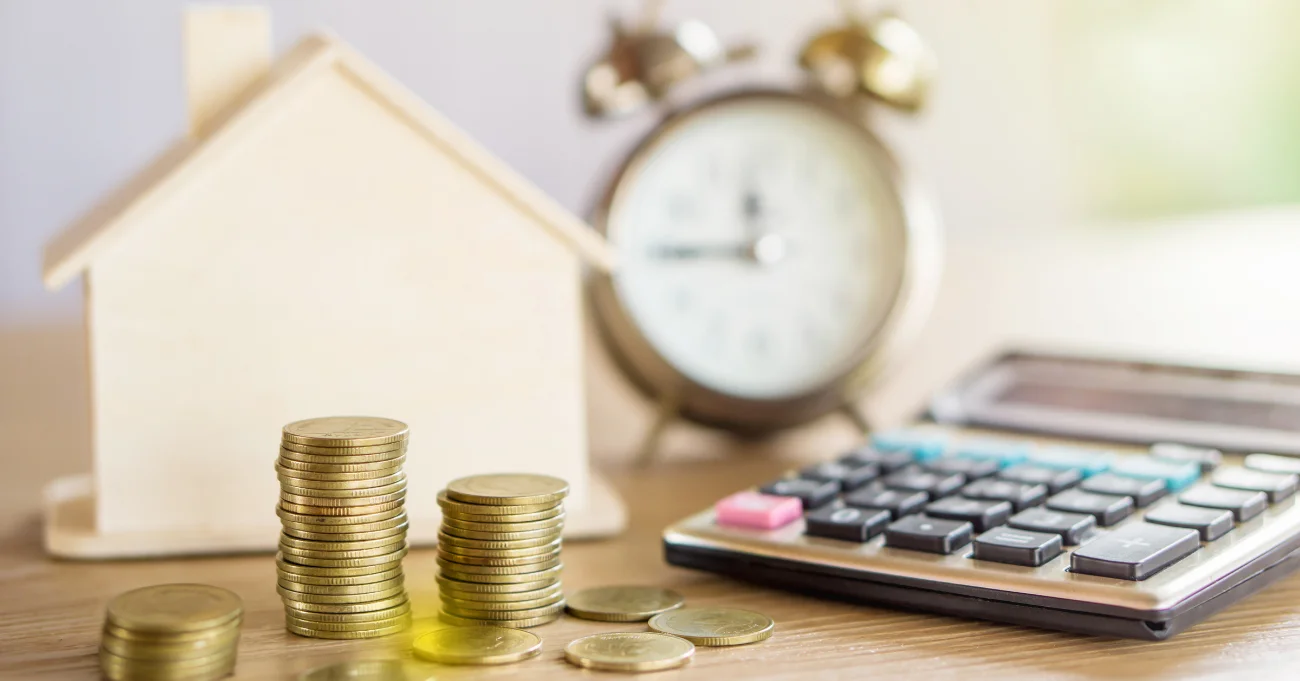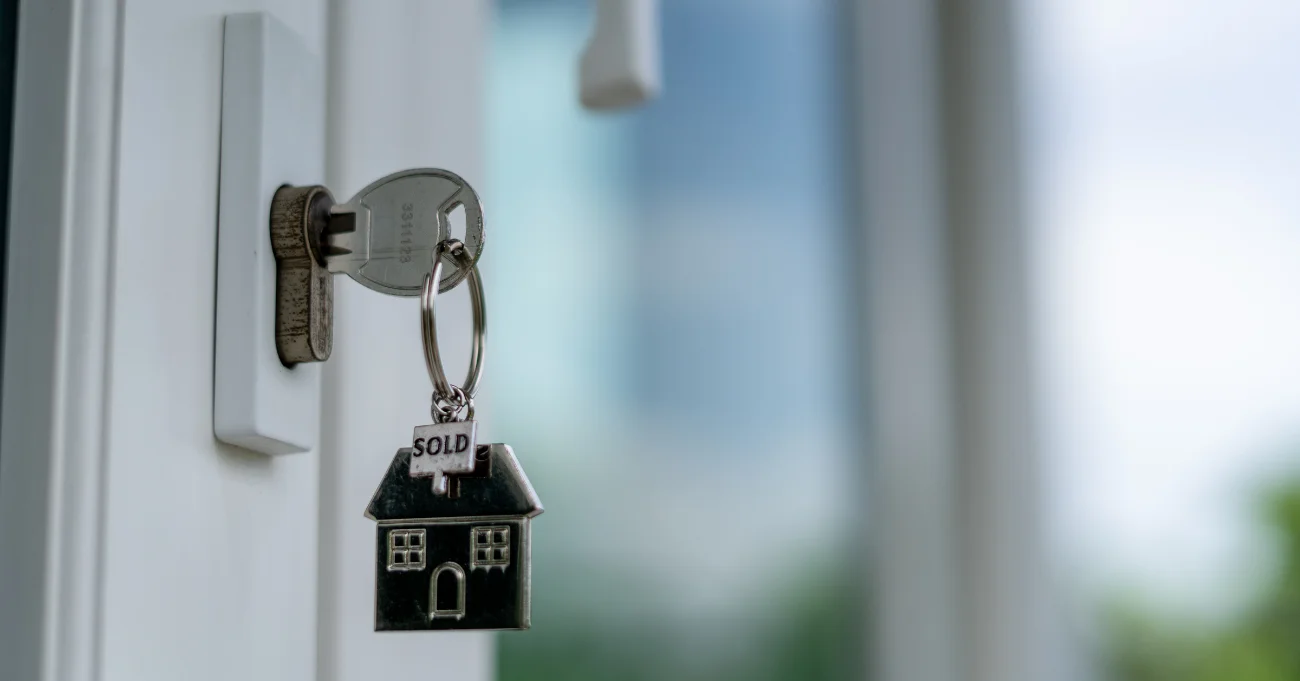Looking for second home mortgage rates in 2025? You’ve come to the right place.
Dreaming of a mountain retreat, a beachfront getaway, or simply a second place to call home?
You’re not alone. Recent statistics compiled by Nasdaq show that two-thirds of wealthy Americans own a second home.
However, understanding second home mortgage rates is crucial before taking the plunge into vacation property ownership. While owning a second home can provide a personal sanctuary and potential investment opportunity, the financing landscape differs significantly from what you might expect based on your primary residence experience.
How Second Home Mortgage Rates Compare
One of the most common misconceptions about second home mortgages is that you’ll qualify for the same interest rates as your primary residence.
However, this is rarely the case.
Here’s what you should know about how second home mortgage rates stack up:
Second Home vs. Primary Residence Rates
Second home mortgage rates typically run about 0.50% higher than primary residence rates. For example, if primary home mortgage rates are averaging 6.0%, you might expect to pay around 6.5% for a second home.
However, it should be noted that interest rates vary widely based on your individual situation. If you have a particular second home in mind, Defy Mortgage can give you a detailed answer based on your personal financial situation if you schedule an appointment with us.
Why the difference? Lenders consider second homes to be higher risk than primary residences. The reasoning is straightforward: in financial hardship, people will prioritize the mortgage on their main home before their vacation property.
Second Home vs. Investment Property Rates
It’s important to distinguish between second homes and investment properties, as the rates differ:
- Second home mortgage rates: Usually about 0.50% higher than primary home rates
- Investment property mortgage rates: Usually around 0.50% to 0.75% higher than primary home rates
This means second homes generally qualify for slightly better rates than pure investment properties. The distinction comes down to how you plan to use the property, which we’ll discuss in more detail later. Keep in mind that this isn’t always the case, which is why it’s important to discuss current rates with your lender of choice prior to making any decisions.
Factors Affecting Your Second Home Mortgage Rate

Like any mortgage, several factors influence the interest rate you’ll receive for your second home, including but not limited to:
1. Credit Score Requirements
Second home mortgages typically require higher credit scores than primary residences. While you might qualify for a primary home loan with a score as low as 620 (or even 580 with FHA loans), second homes generally require scores of 640 or higher.
The higher your credit score, the better your rate will be. Borrowers with scores above 740 typically receive the most favorable second home mortgage rates.
2. Down Payment Expectations
Expect to make a larger down payment on your second home:
- Primary residence: Can be as low as 0-3% (with certain programs)
- Second home: Usually requires at least 10% down
- Investment property: Typically 15-25% down
Some lenders may require 20% or more for a second home, especially if your application has other challenging aspects like a lower credit score, higher debt-to-income ratio or larger loan amount.
3. Debt-to-Income Ratio (DTI)
Lenders apply stricter debt-to-income ratio requirements for second homes. Since you’ll be responsible for two mortgage payments, they want to ensure you can comfortably manage both. Your total DTI (including both mortgages) typically needs to be below 43-45% for conventional second home financing.
4. Cash Reserves
Having substantial cash reserves strengthens your second home mortgage application and can potentially help you secure better rates. Lenders often want to see that you have enough savings to cover several months of mortgage payments for both properties.
5. Property Location and Type
The location and type of your second home can affect your mortgage rate. Properties in desirable vacation areas might qualify for better rates than those in remote locations. Similarly, single-family homes often receive better rates than condos or townhouses.
Current Second Home Mortgage Rate Trends (2025)
The mortgage market is constantly evolving, and second home mortgage rates are no exception. Here’s what we’re seeing in the current market:
Benchmark Rates
As of March 2025, primary home mortgage rates are averaging around 6.75% for a 30-year fixed loan (your rate may vary based on individual factors). Following the typical pattern, second home rates are running approximately 0.50% higher, putting them around 7.25% – although this varies greatly depending on the situation.
Rate Forecast
While predicting exact rate movements is impossible, most housing economists expect rates to remain relatively stable through 2025, with potential modest decreases as inflation continues to moderate. This creates a favorable environment for second home buyers who have been waiting for rate stability.
Impact of Economic Factors
Second home mortgage rates are influenced by the same economic factors as primary home rates, including:
- Federal Reserve policies & rate cuts – though not directly correlated
- Inflation metrics
- Employment data
- Overall economic growth
However, second home rates can sometimes be more sensitive to economic shifts, as lenders adjust risk premiums during uncertain times.
Second Home vs. Investment Property: Understanding the Distinction
The distinction between a second home and an investment property is crucial for mortgage purposes, as it directly impacts your rate, down payment requirements, and qualification criteria.
Second Home Designation
For a property to qualify as a second home, it typically must:
- Be occupied by you for some portion of the year
- Be a one-unit dwelling
- Be suitable for year-round occupancy
- Be under your exclusive control (not managed by a property management company)
- Not be subject to timeshare arrangements
Most lenders and the IRS consider a property a second home if you personally use it for at least 14 days per year or 10% of the days it’s rented out, whichever is greater.
Investment Property Designation
A property is classified as an investment property if:
- You don’t occupy it at all
- Its primary purpose is to generate income
- You rent it out full-time
The occupancy declaration you make during the mortgage application process is legally binding. Misrepresenting a property’s intended use constitutes mortgage fraud, which carries serious penalties.
Limited Rental Income
Many second homeowners wonder if they can occasionally rent out their property when they’re not using it. Most lenders allow limited rental activity for second homes, often through platforms like Airbnb or VRBO. However, if rental income becomes the primary purpose of the property, it should be classified as an investment property.
Financing Options for Second Homes
Several mortgage options are available for second home purchases:
1. Conventional Loans
Conventional loans backed by Fannie Mae and Freddie Mac are the most common financing option for second homes. These typically require:
- 10-20% down payment
- Credit score of 640 or higher
- DTI ratio below 43-45%
- Stable income and employment history
2. Jumbo Loans
If your second home exceeds conforming loan limits (currently $766,550 in most areas), you’ll need a jumbo loan. These typically have:
- Stricter credit requirements (often 700+)
- Larger down payment requirements (20% or more)
- More stringent income verification
- Lower DTI requirements
3. Home Equity Options
If you have substantial equity in your primary residence, you might leverage it to finance your second home through:
- Cash-out refinance: Replace your existing mortgage with a larger one and use the difference as a down payment or to purchase the second home outright
- Home equity loan: Take out a lump-sum loan against your equity
- Home equity line of credit (HELOC): Access a revolving credit line based on your home equity
4. Non-Traditional Financing
At Defy Mortgage, we specialize in non-traditional financing options for second homes, including:
- P&L loans: Qualify based on business profit and loss statements rather than tax returns
- Foreign national loans: Options for non-U.S. residents buying vacation homes
- Bank statement loans: Qualify based on personal or business bank statements instead of traditional income verification
- Interest-only loans: Make payments covering only the interest for an initial period, resulting in lower monthly payments
Strategies to Secure Better Second Home Mortgage Rates

While second home mortgage rates are inherently higher than primary residence rates, several strategies can help you secure the most favorable rate possible:
1. Improve Your Credit Score
Even a modest credit score improvement can significantly impact your rate. Consider:
- Paying down credit card balances
- Resolving any derogatory marks or errors
- Avoiding new credit applications before applying
- Keeping older accounts open to maintain credit history
2. Make a Larger Down Payment
While 10% down may be the minimum for a second home, putting down 20% or more can help you secure a better rate and avoid private mortgage insurance (PMI).
3. Reduce Your Debt-to-Income Ratio
Paying off or paying down existing debts before applying for a second home mortgage can improve your DTI ratio and potentially lower your rate.
4. Consider a Shorter Loan Term
15-year mortgages typically carry lower interest rates than 30-year mortgages. If you can afford the higher monthly payments, a shorter term could save you significantly on interest.
5. Shop Around
Different lenders offer different rates and terms for second home mortgages. At Defy Mortgage, we recommend comparing offers from at least 3-5 lenders to find the best deal.
6. Lock Your Rate
If you find a favorable rate, consider locking it in as soon as possible, especially in a volatile rate environment.
Tax Implications of Second Home Mortgages
Understanding the tax implications of a second home mortgage can help you evaluate the true cost of ownership:
Mortgage Interest Deduction
As of 2025, you can deduct mortgage interest on up to $750,000 of combined debt for your primary and second homes (if you itemize deductions rather than taking the standard deduction).
Property Tax Deduction
Property taxes on your second home may be deductible, but are subject to the $10,000 cap on state and local tax (SALT) deductions that applies to both your primary and second homes combined.
Rental Income Considerations
If you rent your second home for 14 days or less per year, the rental income is tax-free. If you rent it for more than 14 days, you must report the income but can also deduct expenses proportionate to the rental period.
Common Second Home Mortgage Scenarios
Young Professionals: Vacation Home as First Investment
An emerging trend among young professionals is purchasing a vacation home as their first real estate investment, especially if they live in expensive urban areas where primary home ownership is out of reach. These buyers often:
- Purchase in more affordable vacation markets
- Use the property part-time themselves
- Rent it out when not in use
- Build equity while enjoying the benefits of homeownership
Pre-Retirement Planning: Future Primary Residence
Many buyers in their 50s and 60s purchase second homes in locations where they plan to retire. This strategy allows them to:
- Secure financing while still employed full-time
- Begin transitioning to their retirement location
- Lock in their desired property before prices increase
- Potentially generate rental income until retirement
Shared Ownership: Co-Buying with Family or Friends
To make second home ownership more affordable, some buyers partner with family members or friends. This arrangement requires careful planning and clear legal agreements regarding:
- Ownership structure
- Usage rights
- Expense sharing
- Exit strategies
Final Thoughts on Second Home Mortgage Rates
Purchasing a second home can be a rewarding investment in your lifestyle and financial future. While second home mortgage rates are higher than primary residence rates, understanding the factors that influence them and exploring all available financing options can help you secure the most favorable terms.
By working with a lender like Defy Mortgage that specializes in creative financing solutions, you can navigate the complexities of second home mortgages and find a path to ownership that aligns with your goals and financial situation.
Ready to explore your second home mortgage options? Connect with a Defy Mortgage specialist today to discuss your unique situation and discover the financing solutions that work best for you.
FAQs About Second Home Mortgage Rates
Why are second home mortgage rates higher than primary residence rates?
Second home mortgage rates are higher because lenders consider them riskier investments. In financial hardship, borrowers typically prioritize payments on their primary residence, making second homes more vulnerable to default.
How much higher are second home mortgage rates?
Second home mortgage rates typically run about 0.50% higher than rates for primary residences. However, the exact difference depends on your credit profile, down payment, and overall market conditions.
Can I use rental income to qualify for a second home mortgage?
Generally, expected rental income cannot be used to qualify for a second home mortgage. This is because true second homes are primarily for personal use, not rental income. If you plan to rely on rental income, the property may need to be classified as an investment property.
Do all lenders charge higher rates for second homes?
Usually, yes, virtually all lenders charge higher rates for second homes compared to primary residences. However, the amount of the rate premium varies by lender, which is why shopping around is important.
Can I refinance my second home mortgage to get a better rate?
Yes, second home mortgages can be refinanced just like primary residence mortgages. When market rates drop or your financial situation improves, refinancing may help you secure a lower rate and monthly payment.
How does a second home mortgage affect my ability to buy other properties?
Having a second home mortgage increases your debt-to-income ratio, which may affect your ability to qualify for additional mortgages. Lenders will consider all your property obligations when evaluating applications for new loans.
What’s the minimum down payment for a second home?
Most lenders require at least 10% down for a second home, but you may need 20% or more depending on your credit profile and the lender’s requirements. Putting down at least 20% typically results in better rates and eliminates the need for private mortgage insurance (PMI).
Do second home mortgage rates vary by property type?
Yes, rates may vary based on property type. Single-family homes often receive the most favorable rates, while condos, townhouses, and properties in vacation areas may have slightly higher rates due to perceived additional risk factors.
Is a second home considered to be a vacation home?
In most cases, yes. Second homes are typically vacation properties, unless you’re renting them out for income, which would classify them as investment properties. If you plan to rent out your second home, consider exploring investment property financing options such as DSCR (Debt Service Coverage Ratio) loans.




